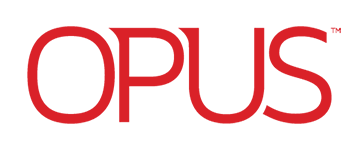Why you should keep your email addiction in check
Checking emails compulsively is a daily way of life for most of us. After all, it’s the only way to fight off the never-ending stream of messages coming into our inbox. But imagine how you would feel and how much work you could get done if you could break that habit?
In this first part of a two-part blog, we take a look at email addiction and give you five great reasons to break it. In the second part, we look at an alternative that could transform the way you and your coworkers perform.
A recent survey by Adobe revealed that 80% of people check their email before they get to work. Millennials are the worst culprits: nearly half of them check their emails each morning before they even get out of bed.
But it’s no wonder we can’t bear to look away from our inbox; we are drowning in emails. It is estimated that most people receive more than 100 work emails a day. That rate is growing by 15% a year and within five years we’ll be wading our way through more than 200 emails every… single… day…. Miss a few days and it will be the equivalent of reading War and Peace just to catch up.
Surely the whole point of technology is to make our lives easier, not more difficult? Somehow it has managed to do the opposite. Blogger Gretchen Rubin summed it up well when she said, “Technology is a good servant but a bad master”.
Most of us have become slaves to email. Here are five reasons why you should break your email addiction:
1. Eating your time
A report by management consultants McKinsey Global Institute estimates that on average employees spend 28% of their time dealing with emails. Adobe puts this even higher at a whopping 6.3 hours a day. No wonder most employee surveys cite the burden of having to read and answer emails as the top thing they hate about their jobs.
2. Group emails
Nothing winds people up like being included in a group email. A good rule of thumb is to think twice before sending a group email. Then think again. Then don’t send it. And whatever you do, don’t send a Reply to All saying “Thanks!” or “Got it, thanks!” or “How are you?” or “What are you doing for lunch?”.
French company Atos recently had a novel idea. They banned email within their workforce of 74,000 employees. Guess what happened? The team’s productivity improved immediately.
3. Emails are stressful
Most people find dealing with email taxing. The thought of having an unanswered email in your inbox sitting waiting for your attention can create tension and pressure. A study at the University of California has confirmed that emails do indeed lead to anxiety. In a controlled test, participants who were denied emails for five days were more relaxed and productive, and suffered from less tension.
4. A poor tool for communication
You may find it hard to believe given that email has become the dominant way for people to communicate, but it’s true; email is bad for communication. Email lacks the subtlety of a telephone or face-to-face conversation, where we use vocal and verbal clues to add shade to our meaning. In fact, according to Forbes, 93% of communication is non-verbal.
That’s why it is hard to add nuance in an email. Even if you do, the chances are that the recipient won’t pick it up anyway.
Most lengthy email exchanges can probably be avoided by a phone call. Or, in the case of a co-worker, wandering over to their desk for a chat.
5. Emails are distracting
Every time an email notification pops up at the bottom of your screen your concentration is broken. A University of California study estimates that it takes an average of 25 minutes for a worker to get back to their original task after a disruption. And typically, disruptions come every 11 minutes. The result is that people flit from one thing to another leaving a string of half dealt with tasks.
So, what’s the answer? One of the main reasons people send emails in a work environment is to collaborate on a project. But email is badly suited for collaboration. Fortunately, there is another way, as we will discover in our next blog Goodbye Email: Cloud-based apps are the future of collaboration.



